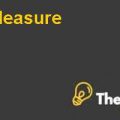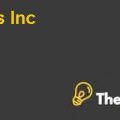Marine Harvest Case Study Solution
Background:
Marine Harvest was one of the leading companiesin salmon farming and its selling. The company usually farmed salmon on its own site where it had aquaculture. An aquaculture is a place where companies cultivate freshwater fishes, aquatic plants and shellfishes. It was surveyed that around 120 million of seafood was produced by Sea Food industries by the use of aquaculture. The 30% production was fish feed also known as protein supply, 35% were the wild-caught fishes, and around 35% were the farmed fishes.
The United NationsFood and AgriculturalOrganisation (FAO) analysed and forecasted that the total fish production through aquaculture would be around 180 million. As the worldwide fishing stocks collapsed, the best solution for the world’s food problem would be to farm fishes through use of aquaculture. Salmon fish has been greatly known for providing great taste and health benefits. The salmon helps in curing from diseases such as cardiovascular disease, inflammatory diseases and among few others. Salmon contains ahigh level of Vitamin A and D and among few other nutrients such as magnesium, iodine and selenium.
Introduction:
Marine Harvest is one of the leading companies providing its production of fishes to almost all the countries. It is also conducting its operation in the countries where there are rich resources of fishes as well as having less barrier from the government. Marine Harvest was formed by the merger of three companies which are Pan Fish ASA, Fjord Seafood ASA and Marine Harvest N.V which is a Dutch firm.
Marine Harvest was known for its global production and distribution of salmon on whichit operated in many of the countries such as Norway, China, Canada and Chile. In the year 2011, Marine Harvest had a total overall production of salmon which was about 335,000 tons out of which 220,000 tonswas produced in Norway where the total overall global production of salmon was 1,400,000.
In the year 2010, the board of directors hired a new CEO Aarskog for Marine Harvest who worked in its competitor company Leroy Seafood in order to bring the company on the right track. Aarskog had a great deal of experience in the farming of salmon in the fishing industry and his previous position of Leroy Seafood as Vice President made him the perfect candidate to run the company.
The reason for thehiring of new CEO was that due to the performance of fishing industry declining, the price of salmon had fallen dramatically in the year 2010 – 2011. This caused the revenues and the profit to decrease. The new CEO came up with certain strategies which would help in the growth of the company in future.
In the year 2015, the number of employees which worked on Marine Harvest were around 12,454 employees. It had generally earned a revenue of $2.75 billion or NOK 27.88 billion. In which after deducting its costs, the net profit of the company was around NOK 1.42 billion. Its sales mostly came from Norway.
Problem Statement:
For the growth of Marine Harvest, the new CEO Aarskog came up with certain new strategies. There were three overall strategies for improving the growth of the company. In which one needed to be selected out of three. Each of the options had its own pros and cons which the company needed to identify and select the one which seemed feasible.
Analysis:
For selecting the appropriate option, it was essential for analysing the company’s internal and external performance. The tools used for conducting analysis on the internal performance were through the use of SW; strength and weakness. The external analysis or industry analysis would be done with the help of the Porter’s 5 forces which are bargaining power of supplier, buyers, thethreat of new entrants, substitutes and competitive rivalry.
Provide a comprehensive, external, industry analysis of the Aquaculture industry
External Analysis:
Porter’s 5 forces:
To analyse the company’s performance and its external factors, Porter’s 5 forces has been used for understanding the key influence on Marine Harvest external performance. The Porter’s 5 forces of Marine Harvest have been discussed below:
Marine Harvest Harvard Case Solution & Analysis
Bargaining Power of Supplier:
The bargaining power of supplier between Marine Harvest and its supplier is high as their business module completely depends upon doing farming of salmon, breeding and capturing worldwide fishes through external partners. The company requires government acceptance and its rules and regulation to be followed for conducting its operation in the country. In some of the countries, government rules and laws have become like a barrier for Marine Harvest in conducting its operation of farming. Marine Harvest is completely dependent on its supplier for the distribution and supply of its fishes to other countries.
Bargaining Power of Buyers:
The bargaining power of buyers is medium as most people who prefer to buy fish as food due to its taste and health benefits. The reason that the fishes provide much more health benefits is that of the aquaculture where the fishes are farmed in a controlled environment, maintaining better health of the fishes and providing much more health and protein benefits to the people. However,the chances are that the bargaining power of the buyers can become high due to people switching to different fishes rather than salmon...............
This is just a sample partial work. Please place the order on the website to get your own originally done case solution.












